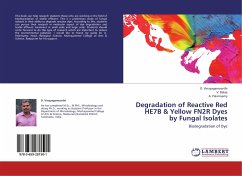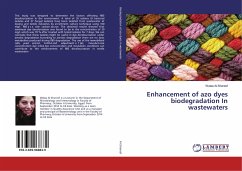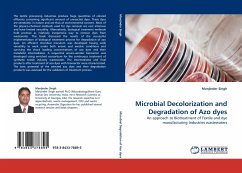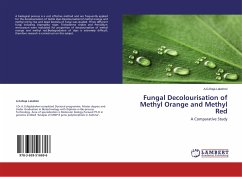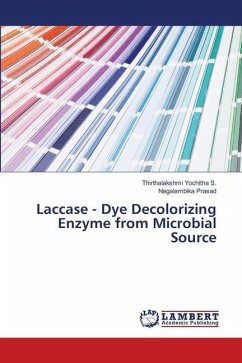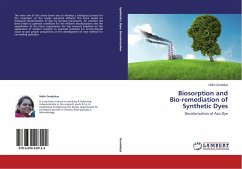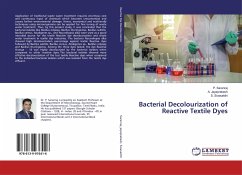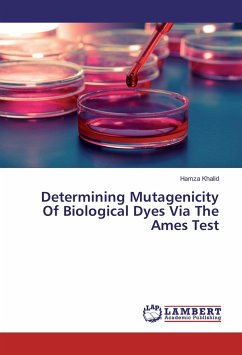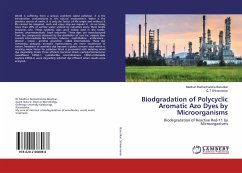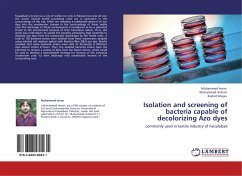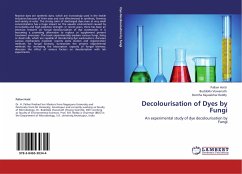
Decolourisation of Dyes by Fungi
An experimental study of dye decolourisation by Fungi
Versandkostenfrei!
Versandfertig in 6-10 Tagen
39,99 €
inkl. MwSt.

PAYBACK Punkte
20 °P sammeln!
Reactive dyes are synthetic dyes, which are increasingly used in the textile industries because of their ease and cost effectiveness in synthesis, firmness and variety in color. The strong color of discharged dyes even at very small concentrations has a huge impact on the aquatic environment caused by its turbidity and high pollution strength. In recent years, there has been an intensive research on fungal decolourization of dye wastewater. It is becoming a promising alternative to replace or supplement present treatment processes. This book experimentally explains various fungi, living or dea...
Reactive dyes are synthetic dyes, which are increasingly used in the textile industries because of their ease and cost effectiveness in synthesis, firmness and variety in color. The strong color of discharged dyes even at very small concentrations has a huge impact on the aquatic environment caused by its turbidity and high pollution strength. In recent years, there has been an intensive research on fungal decolourization of dye wastewater. It is becoming a promising alternative to replace or supplement present treatment processes. This book experimentally explains various fungi, living or dead cells, which are capable of decolorizing dye wastewaters; discusses various mechanisms involved; reports some elution and regeneration methods for fungal biomass; summarizes the present experimental methods for increasing the biosorption capacity of fungal biomass; discusses the effect of various factors on decolorisation with lab experiments.



